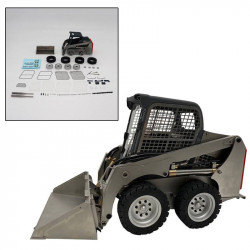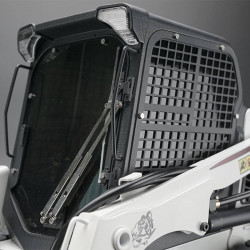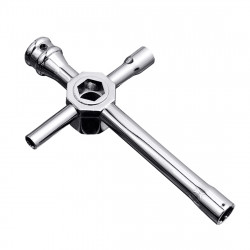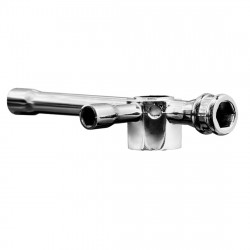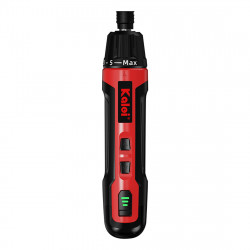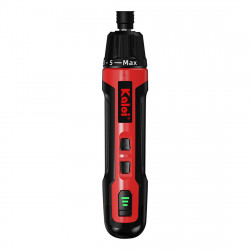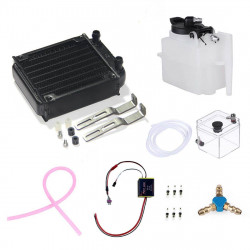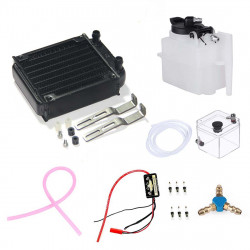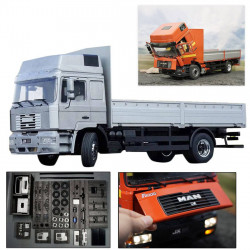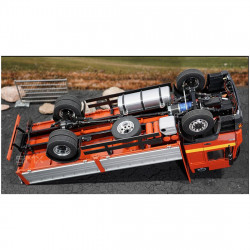
RC Electronics 101: How to Rewire a Remote Control Car
Now that you've got a few great Traxxas cars in your RC electronics collection, it's time to roll up your sleeves.
The first few RC cars you acquired were either pre-owned or ready to drive. As your interest in the pastime grows, you undoubtedly want to attempt to create your remote-controlled vehicle from the ground up.
Installing your RC electronics is one of the most crucial steps in this procedure. Since they form the basis of your car, you should adequately get it operating.
It's not difficult to wire up your remote-controlled automobile—in fact, it's not as complicated as you may have thought.
It takes some time to get used to, but the process is pretty simple. You'll also need the right tools to set it up the way you want.
You can make it appear neat and accurate with a bit of work. Here's how!
Tools You'll Need
Before you start attaching the RC electronics to your model, you'll need a few tools: a soldering iron, some zip ties, and a pair of Lexan scissors (though, in practice, any pair of slim-nosed scissors will work). To put everything together, you'll need these fundamentals.
You should also have some soldering experience.
If not, search for a proper soldering tutorial on YouTube. Because the tool becomes so hot, soldering can be dangerous. Additionally, it is advisable to be cautious when using a soldering iron because improper use might damage your electronics!
Wiring Your RC Electronics
All remote-controlled automobiles follow a few steps. As a practice run, you should first mount your electronics to the chassis of your remote-control car. It's best to know how long each piece of wiring will require. Planning the location of your zip ties will also help to ensure that they don't obstruct any of your RC car's mechanisms.
The next step is to connect your motor to your speed controller. It is advisable to look at the many options for sensor wires if you are using a sensored brushless setup. You want as little running wire as possible.
After that, measure the amount of cabling required to connect your battery to the speed controller (ESC). To finish your project, secure all of your cables with zip ties.
Let's examine this in greater detail.
Mount Your Electronics
Test-fitting all of your components is the initial step in installing any RC electronic wiring. If you also have a motor, speed controller, battery, and receiver/servo, you should put those in there. To measure out the necessary wiring, loosely fit these components into position.
If you're just starting out, you can use the standard wiring length that each component comes with. To prevent them from thrashing around later, you can zip-tie them together into a bundle. If you really want to streamline your units, users can trim the wires and solder them back for a cleaner build.
Wire Your Motor To Your ESC
You can now hook up your motor and ESC after determining their locations.
When you finish your wiring, be sure to leave a small amount of leeway. Your wires shouldn't be too tight; there should be some give.
In the beginning, you should place your motor and ESC as far apart as you can. This will allow you to use your pinion gear to modify your motor. You can solder your wiring in place after you've determined the ideal length.
Before beginning a basic soldering crash course, make sure your soldering iron is hot and has solder on it. The solder on the tip of your iron should be bright.
Apply flux to the tab you are soldering on to make it simpler for the solder to adhere. Then, to provide a base to work with, dab some solder onto the tab.
Add solder to your iron to make it thicker and more blob-like. Then, apply it to the wiring, which ought to be soldered. The two sections should then be soldered together.
The final product should have glossy solder. It's not finished if it's boring. Additionally, you should ensure that your soldering job is free of air bubbles.
Choose Your Sensor Wire
Only those who choose a sensored brushless configuration should go to this level. The majority of Traxxas cars are equipped with an ESC and brushless motor. You should be able to choose from a variety of lengths that will work in various contexts.
If you're working on an off-road car, a more extended sensor cable is a preferable option. A shorter sensor wire is the ideal choice for on-road vehicles.
Make sure they are fixed so they are not crumpled or bowed. Your automobile may stutter if these wires are damaged.
Wire Your Battery
Now that you've completed wiring up most of your important components, it's time to work on the battery.
After strapping the battery onto the vehicle, pull the wires toward the center. Then, bend the cables in the direction of the positive and negative terminals. Next, trim the wires to change their length.
Many batteries now come with their connector and lead. Make sure the wires and battery connector fit snugly against your car's chassis.
You don't want to be dragged on the ground once they fall out of your body shell. Some individuals prefer to have them tucked into their cars, while others like to fasten them with a velcro strap.
Go Through The Car With Zip-Ties
Now that everything is complete, the wiring needs to be cleaned up. To secure any cables that are still a bit lengthy or disorganized, you can use zip ties. The servo and speed controller wire leads are the most common wires for which zip ties are used.
Please make sure these cables are securely wrapped since they lead to the receiver. The extra wires should still have some flexibility as you fold and tie them into position.
You're Done!
Although it takes some getting accustomed to, wiring RC electronics into your automobile is a simple process. Try different configurations until you find the one that suits you best. Everyone has different tastes. Therefore, it's up to you to determine what you enjoy.
